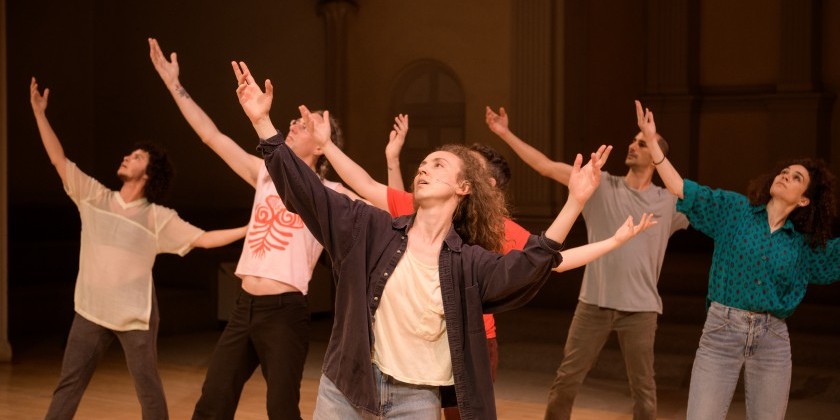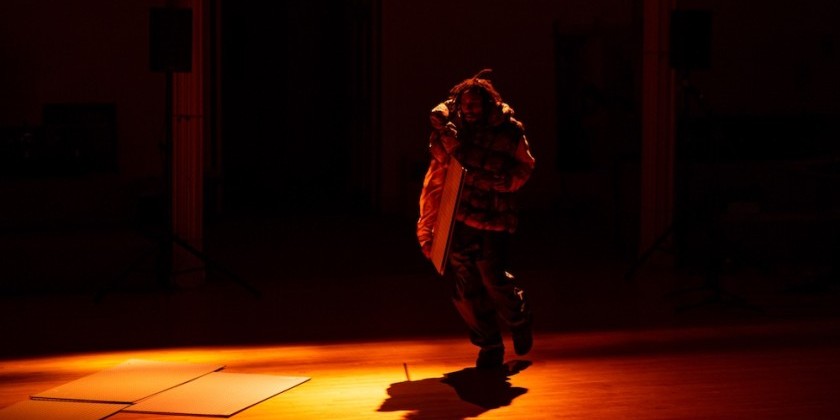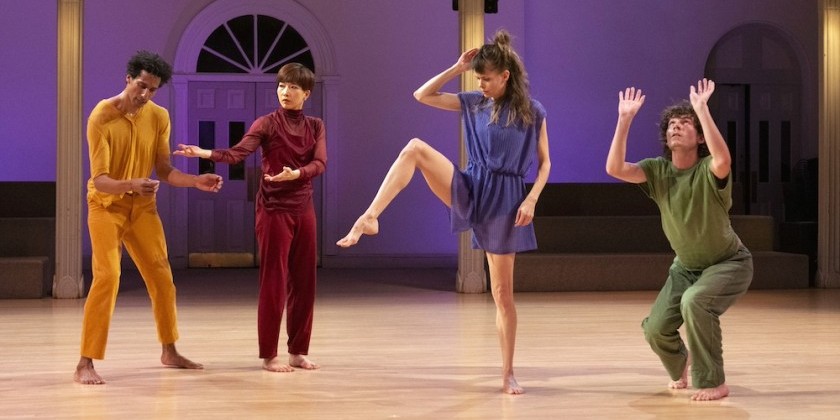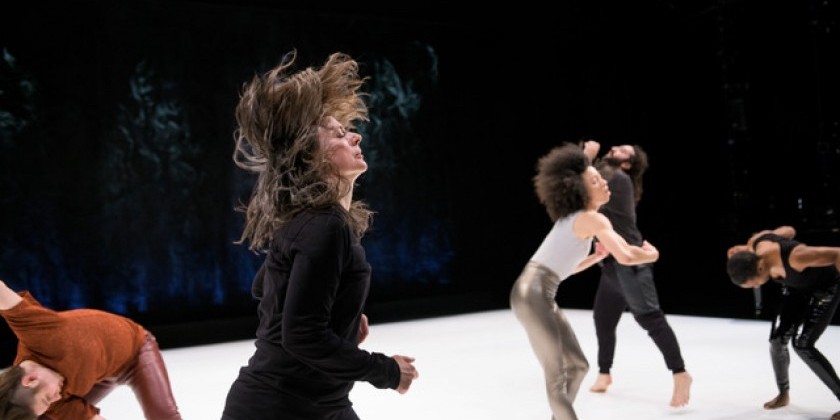IMPRESSIONS: Hadar Ahuvia’s “The Dances are For Us” at Danspace Project

May 31, 2019
Created with the performers: Hadar Ahuvia, Oren Barnoy, Raha Behnam, Autumn Leonard, rozsa daniel lang/levitsky, Mor Mendel, Jules Skloot, and Zavé Martohardjono
Projection: Gil Sperling // Lighting Design: Carol Mullins // Sound Design: Avi Amon
Project Midwifery: rosza daniel lang/levitsky // Project Doula: Franny Silverman
Directorial Support: Jules Skloot // Dramaturgy: Amir Farjoun
Hadar Ahuvia’s The Dances are For Us unpacks the complicated conditions of Jewish placement and displacement through Israeli folk and traditional liturgy. The work begins with eight performers stretching, chatting, and greeting audience members. They then take turns sharing their earliest dance memory. While their pedestrian clothes mark individuality, Jewish ancestry becomes the connective tissue of experience entangled by tradition and contradiction.

The dancers accumulate into a circle that rotates clockwise, hopping from one foot to the next. The Hora(h), a traditional Jewish folk dance, unfurls while Ahuvia travels counterclockwise on the outside of the circle with the same gestures. She overlays her movement with a monologue that provides context and history, her monotone delivery a constant, dense accompaniment. This cadence makes it difficult to follow, but those familiar with the history and Hebrew terms might be able to do so.
Next, a video demonstrates how to execute Ez Va'Keves dance steps. The image quality and instructor’s attire radiate a vibe of an early 1990s public access television studio. Ahuvia and dancer Mor Mendel (who are ironically wearing clothes similar to the male instructor and partner) mimic gestures from the video in real time. Jules Skloot skitters out to place an oddly positioned potted plant (seen in the video) in the middle of the floor and retreats.

Ahuvia provides an English translation on top of the man’s instructions. Gradually, she sprinkles in strategic language referencing Jewish occupation and Yemenite displacement, introducing historical allegiance and a possible connection among folk dance traditions, religious entitlement, and state violence. Eventually another pair join the dance demonstration, followed by the cast. Together they chant, “We knew the land, we made her bloom.”
Later, a projection of a vast terrain illuminates with the sanctuary’s corner. Ahuvia ascends carpeted stairs, her body melting into hues of pink, turquoise, and brown. She puddles down the stairs, then reluctantly pulls herself up with jerks of resistance as the music drones with anticipation. This visual stimulus is a welcome pause from verbal commentary. During another moment, Mendel and Skloot offer a similar reprieve. Their bodies jerk and swoop into suspended extensions as a projection of dancing women leaps across their white robes.

The work ends with the entire cast in song. A video feed of them and found footage of people rejoicing fills the space, amplifying the fabricated smiles and outstretched hands. Think . . . jovial televangelist congregation.
As we know, history is defined by who tells it. Victims and villains shift depending on proximity. Accessible and legible, The Dances are For Us offers consideration and reconciliation that feels timely, important, and smart.
The Dance Enthusiast Shares IMPRESSIONS/our brand of review and Creates Conversation.
For more IMPRESSIONS, click here.
Share your #AudienceReview of performances. Write one today!
As we know, history is defined by who tells it. Victims and villains shift depending on proximity. Accessible and legible, The Dances are For Us offers consideration and reconciliation that feels timely, important, and smart.












